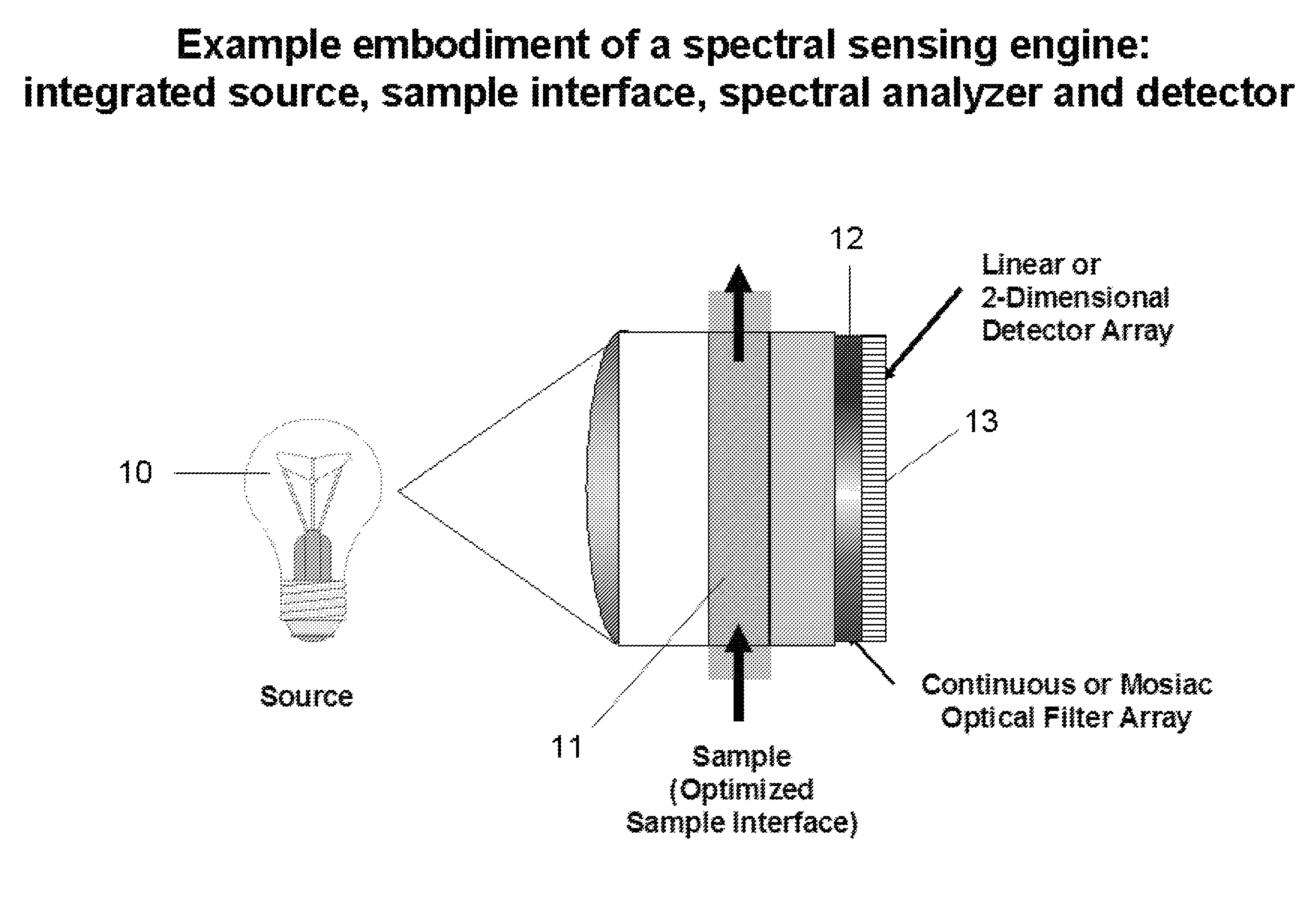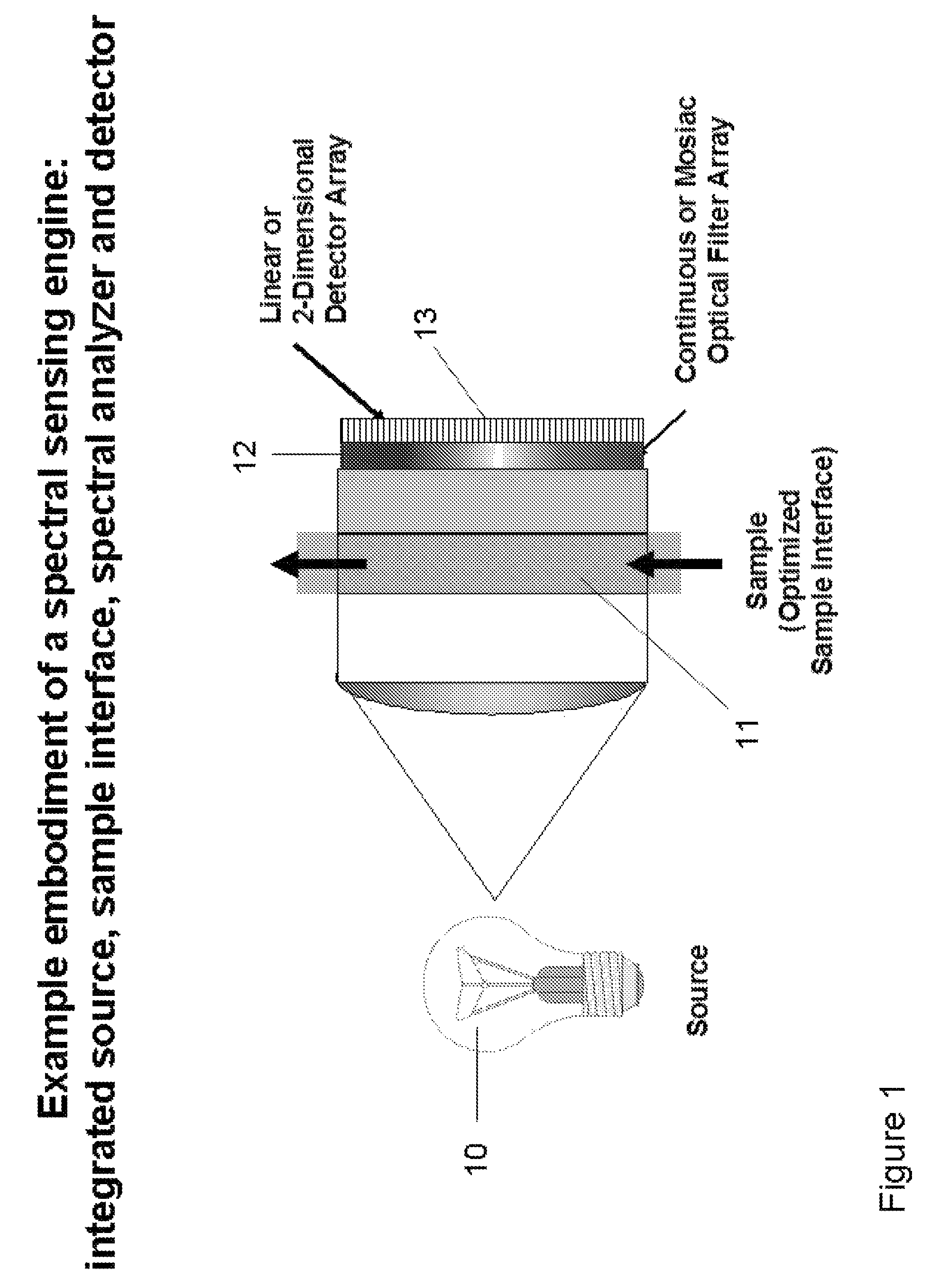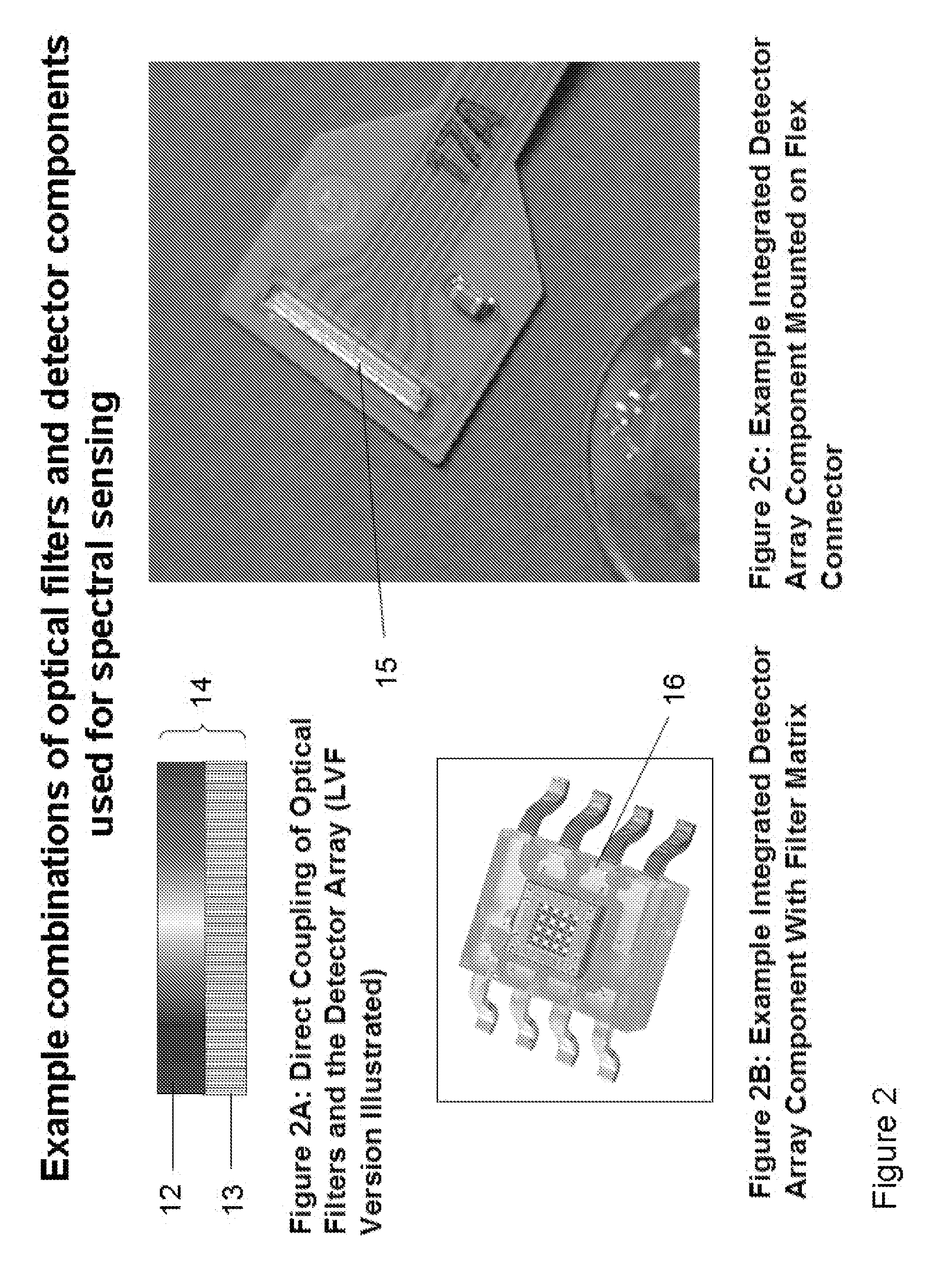Integrated sensing module for handheld spectral measurements
a sensing module and handheld technology, applied in the direction of optical radiation measurement, instruments, spectrometry/spectrophotometry/monochromators, etc., can solve the problems of limited access, limited number of instruments available for laboratory personnel, and the cost of most laboratory instruments is relatively high, so as to reduce reduce the cost. , the effect of reducing the size of the total packag
- Summary
- Abstract
- Description
- Claims
- Application Information
AI Technical Summary
Benefits of technology
Problems solved by technology
Method used
Image
Examples
Embodiment Construction
[0036]The present invention is an integrated handheld measurement system for spectral sensing of aqueous and organic solutions, certain gases and vapors, and for certain solid substrates, such as powders and extended solid surfaces. The sensing aspect of this invention preferably includes one or more miniaturized optical spectral sensors located within the body of the handheld device. Several different embodiments are described for the body of the device, and examples are cited later in FIGS. 6 to 13. FIG. 1 provides a symbolic representation of an example spectral sensing system, comprising a light or energy source 10, an optimized and integrated sample chamber 11, a spectral analyzer or spectrally selective element 12, and an integrated detection system 13. Example embodiments of such spectral sensing systems are illustrated in FIGS. 4 to 10. In the configuration shown in FIG. 1, the source is indicated as an incandescent-style of source, such as a tungsten source. The invention c...
PUM
 Login to View More
Login to View More Abstract
Description
Claims
Application Information
 Login to View More
Login to View More - R&D
- Intellectual Property
- Life Sciences
- Materials
- Tech Scout
- Unparalleled Data Quality
- Higher Quality Content
- 60% Fewer Hallucinations
Browse by: Latest US Patents, China's latest patents, Technical Efficacy Thesaurus, Application Domain, Technology Topic, Popular Technical Reports.
© 2025 PatSnap. All rights reserved.Legal|Privacy policy|Modern Slavery Act Transparency Statement|Sitemap|About US| Contact US: help@patsnap.com



